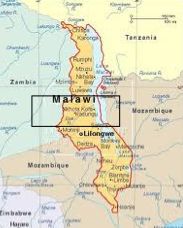Zumani School Project Completed on July 17, 2011!
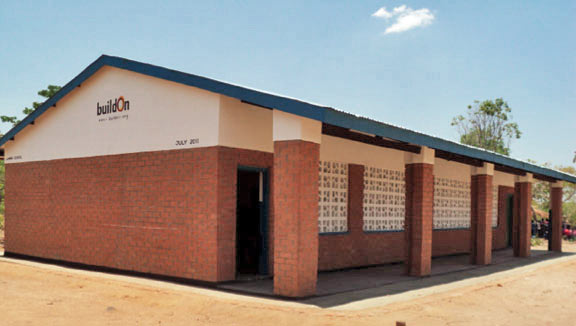
This school, the second one buildOn has bulit in Zumani, started on June 21, 2011 and was completed on July 17, 2011. The people of Zumani contributed 3,200 volunteer workdays to the project, finishing a full 5 weeks ahead of schedule!
Edna Muluta, buildOn’s Malawi field coordinator, says that Zumani is the most punctual and active community she has ever worked with. The people of Zumani were able to finish this project in record time because they had a surplus of materials ready to go in advance. Students began attending classes in the new Zumani school block in September 2011. There are currently 518 students (258 girls, 260 boys) and 6 full time teachers in grades 1 through 8 in Zumani. Members of the community have made it clear that they are hopeful about continuing to build school blocks with buildOn until all of these students can be accommodated in strong, safe classrooms.
Edna Muluta, buildOn’s Malawi field coordinator, says that Zumani is the most punctual and active community she has ever worked with. The people of Zumani were able to finish this project in record time because they had a surplus of materials ready to go in advance. Students began attending classes in the new Zumani school block in September 2011. There are currently 518 students (258 girls, 260 boys) and 6 full time teachers in grades 1 through 8 in Zumani. Members of the community have made it clear that they are hopeful about continuing to build school blocks with buildOn until all of these students can be accommodated in strong, safe classrooms.
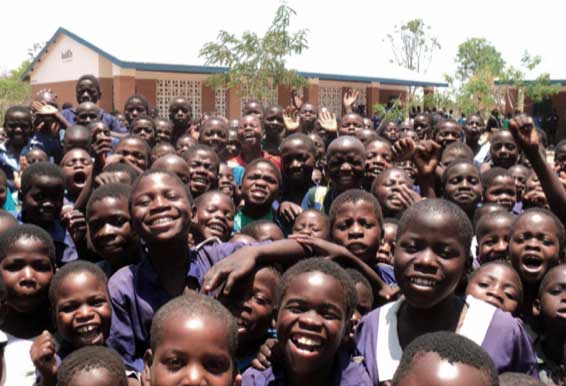
“We thank you wholeheartedly for your generosity and willingness to develop education in these remote areas like Zumani where education was almost impossible to attain because of lack of school blocks. Special thanks to the Kerzner family and friends for visiting this community and developing it. We love you so much!”
-Chief Zumani
“Teachers now feel more motivated because learning and teaching will take place in a good classroom. This will hopefully motivate the learners as well to flock to the school, therefore increasing the literacy levels in the village and empowering the youth in the community.”
-Mr. Dyson, schoolteacher
“Hard work and team spirit has benefited us with two beautiful and strong blocks. Unity is needed when a lot of people are working for a common goal. We thank our donors and we are prepared for a third block!”
-Mr. Daniel Kadzipua, parent and community member
-Chief Zumani
“Teachers now feel more motivated because learning and teaching will take place in a good classroom. This will hopefully motivate the learners as well to flock to the school, therefore increasing the literacy levels in the village and empowering the youth in the community.”
-Mr. Dyson, schoolteacher
“Hard work and team spirit has benefited us with two beautiful and strong blocks. Unity is needed when a lot of people are working for a common goal. We thank our donors and we are prepared for a third block!”
-Mr. Daniel Kadzipua, parent and community member
Zumani Community Profile
Zumani is a small village in the western part of Kasungu district in the central region of Malawi. Zumani and fourteen surrounding villages make up a larger community, which is led by two Senior Group Village Headmen: Group Village Headman Zumani and Group Village Headman Kawambamakoza. Each of the smaller villages in the area is led by a Village Headman and the entire community belongs to the Chewa ethnic group, the largest ethnic group in Malawi.
Zumani is very close to Kasungu National Game Park and the Zambian border. Because it is so far from town, very little development aid- either from the government or nonprofit organizations- reaches this area. The people of Zumani are farmers of tobacco and maize. Most of the population lives in grass thatched houses made with mud bricks and surrounded by farm land. The climate is tropical with the hottest months from September to December and the coolest from May to August.
Zumani is very close to Kasungu National Game Park and the Zambian border. Because it is so far from town, very little development aid- either from the government or nonprofit organizations- reaches this area. The people of Zumani are farmers of tobacco and maize. Most of the population lives in grass thatched houses made with mud bricks and surrounded by farm land. The climate is tropical with the hottest months from September to December and the coolest from May to August.
Old School Conditions
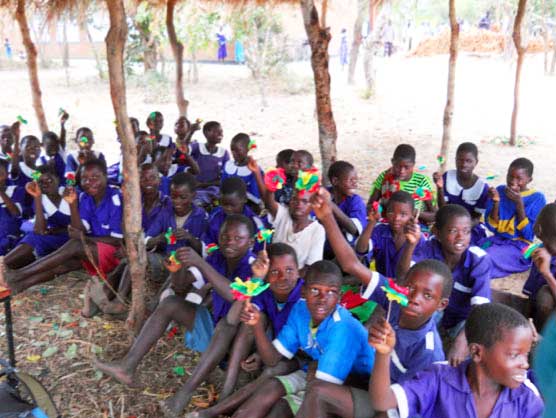
Students attending school under a thatched shelter
The primary school in Zumani was established in 2001 when community members came together to petition the government for a school so that their children wouldn’t have to walk so far to attend classes. Permission was granted and the school started with just first grade.
Over the years the community added more grades and built temporary, makeshift classrooms out of grass to accommodate the growing enrollment. When buildOn began working with Zumani in 2009, there were over 500 students from the surrounding villages enrolled in grades 1 through 7. There were just two permanent classrooms and three teachers.
Over the years the community added more grades and built temporary, makeshift classrooms out of grass to accommodate the growing enrollment. When buildOn began working with Zumani in 2009, there were over 500 students from the surrounding villages enrolled in grades 1 through 7. There were just two permanent classrooms and three teachers.
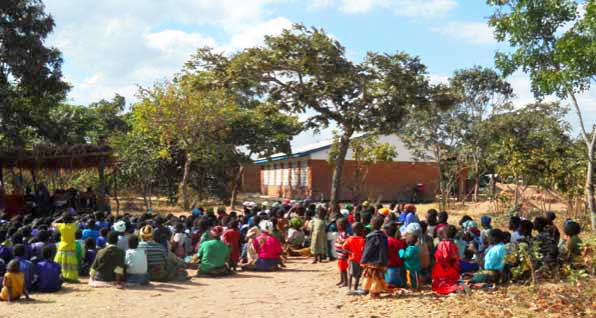
The first school block
The Zumani School Project
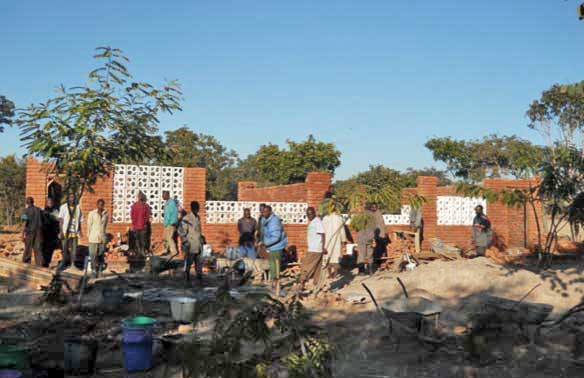
Progress on the new school block
To date, buildOn has partnered with the people of Zumani to complete one school block (in August 2009) and begin a second school block (in June 2010). The second buildOn school block in Zumani will have two classrooms built with fired clay bricks molded by the villagers. The school will have a metal roof and a poured concrete floor, as well as 2 new latrines. As with all buildOn projects, responsibilities are shared as outlined below:
Community Contribution
• Unskilled labor: 30 workers (15 women and 15 men) per day, six days per week
• Commitment to educating girls and boys equally
• The land on which the school is built
• High quality local materials: sand, gravel, water & rocks
• Volunteer management committee made up of 12 villagers (six women, six men)
• Lodging for buildOn Field Coordinator and skilled laborers in local homes
• Basic construction tools (picks, buckets, etc.) when available
buildOn Contribution
• Engineering and architecture
• Construction materials (excluding local materials) for school and latrine
• Skilled labor and plans needed to build the school
• Project management (buildOn coordinators)
• Instruction in basic construction techniques
Community Contribution
• Unskilled labor: 30 workers (15 women and 15 men) per day, six days per week
• Commitment to educating girls and boys equally
• The land on which the school is built
• High quality local materials: sand, gravel, water & rocks
• Volunteer management committee made up of 12 villagers (six women, six men)
• Lodging for buildOn Field Coordinator and skilled laborers in local homes
• Basic construction tools (picks, buckets, etc.) when available
buildOn Contribution
• Engineering and architecture
• Construction materials (excluding local materials) for school and latrine
• Skilled labor and plans needed to build the school
• Project management (buildOn coordinators)
• Instruction in basic construction techniques
